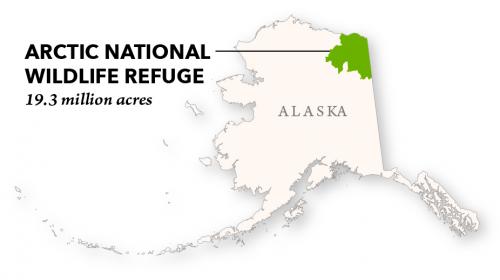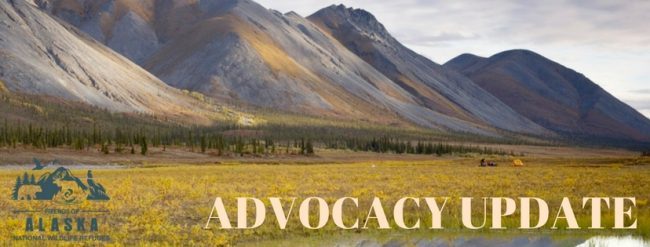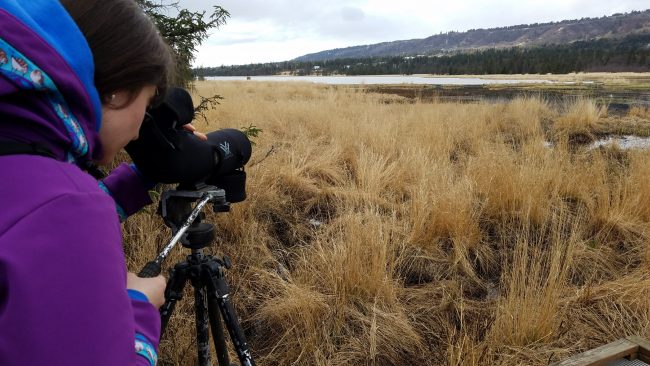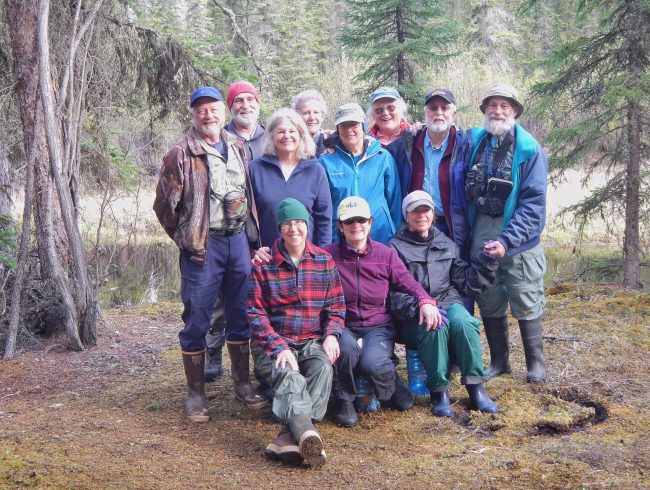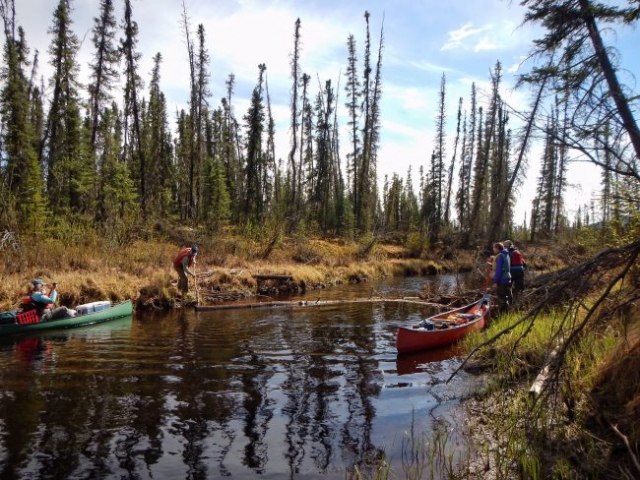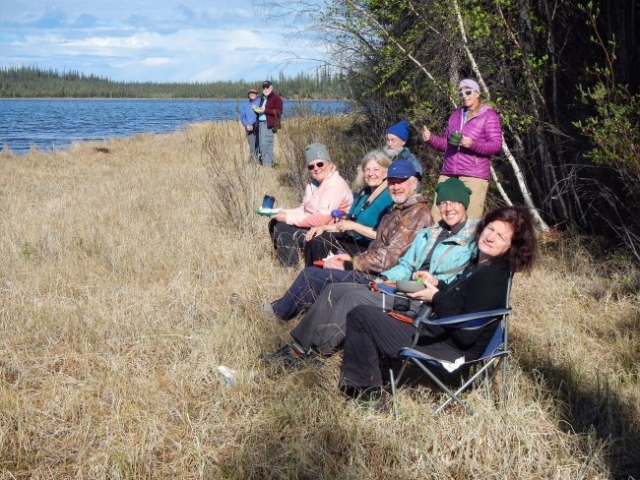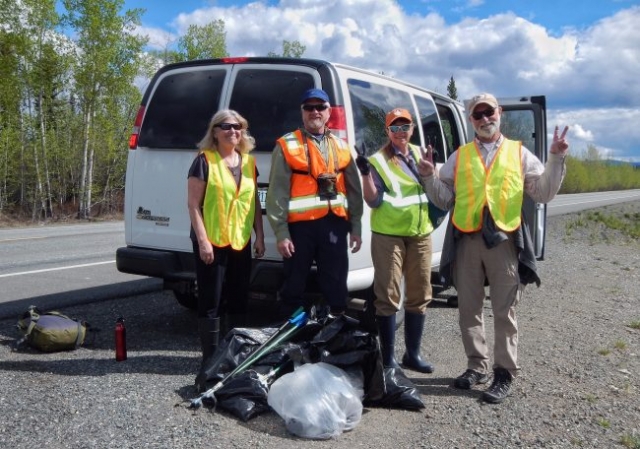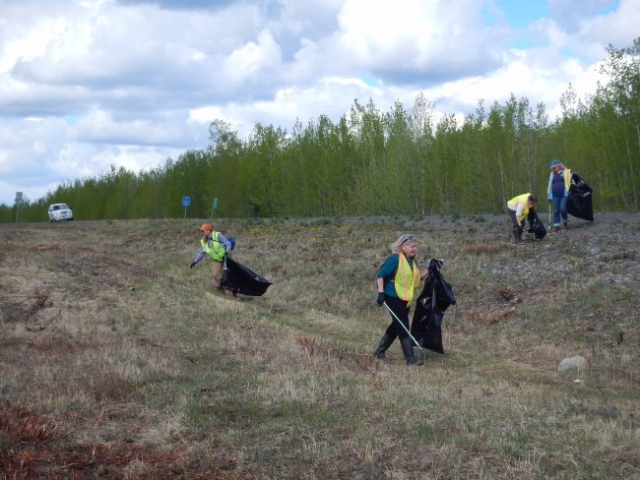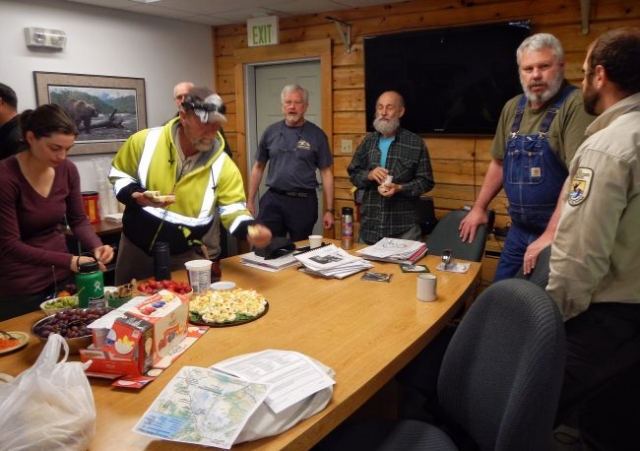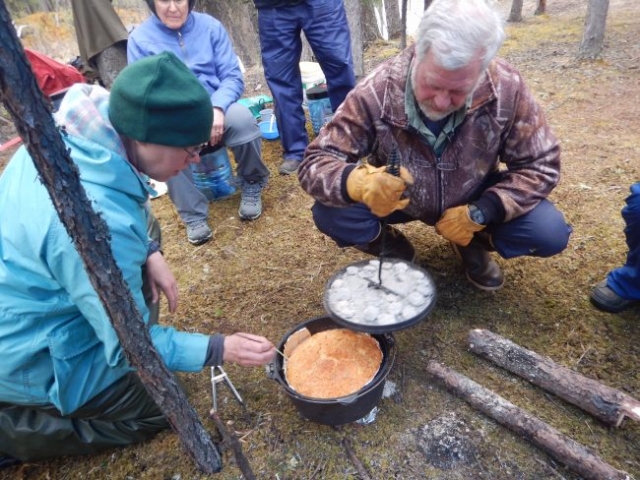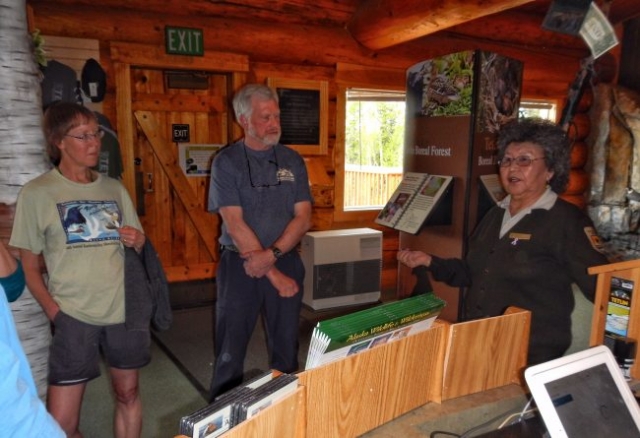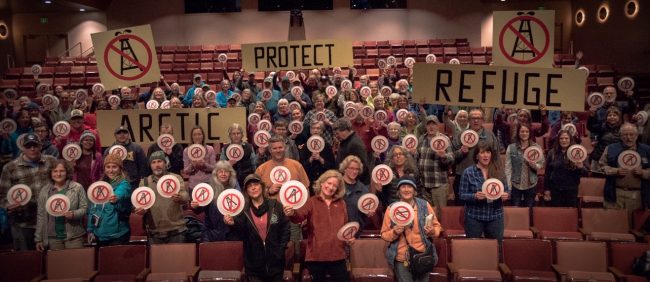Month: June 2018
June 2018 Advocacy Update
by Board President, David Raskin

Oil Drilling in the Arctic Coastal Plain
The 2017 tax law mandated the sale of oil leases in the Coastal Plain of the Arctic National Wildlife Refuge. The proposed oil development would devastate the biological integrity and wilderness character of the crown jewel of National Wildlife Refuge System. It would violate the 1987 signed agreement between the governments of the United States and Canada to protect the porcupine caribou herd that is critical to the subsistence lifestyle and spiritual well-being of the Gwich’in people of Alaska and Canada. The Department of Interior has fast-tracked this process with a goal of completing a draft environmental statement (DEIS) in less than six months. They have held scoping meetings in Alaska and Washington, DC to receive public comments on what should be included in the DEIS. Along with many others, I testified at the Anchorage hearing to express our opposition to the proposed drilling and to urge thorough examinations of the many issues and problems posed by oil drilling and production (see above). The deadline to submit comments is June 19. You can email them to: blm_ak_coastalplain_EIS@blm.gov
Click here to sign on to our petition demanding the suspension of this ill-conceived scheme or submit your individual comments regarding drilling in the Arctic Refuge to the BLM by clicking here. (the comment link is on the right hand side of the page under “Submit Scoping Comments” please submit comments on the Notice of Intent)
Predator Control
The National Park Service has proposed amendments to its regulations for sport hunting and trapping in national preserves in Alaska. The proposed rules are published at https://federalregister.gov/d/2018-10735. These new rules would remove a regulatory provision issued by the National Park Service in 2015 that prohibited certain sport hunting practices that are otherwise permitted by the State of Alaska. The proposed rules are consistent with Alaska rules that allow taking any black bear, including cubs and sows with cubs, with artificial light at den sites; harvesting brown bears over bait; taking wolves and coyotes (including pups) during the denning season (between May 1 and August 9); taking swimming caribou; taking caribou from motorboats under power; taking black bears over bait; and using dogs to hunt black bears. These methods are inconsistent with responsible wildlife management and are opposed by many biological experts, including those who formulated the rules previously adopted by the National Park Service and the U.S. Fish and Wildlife Service, and the current rules for the Kenai National Wildlife Refuge, which are also being revised. The deadline to submit comments on the proposed Park Service rules is July 23, 2018.
Izembek Land Trade and Road
Recently, the Alaska Department of Transportation inquired about a permit for additional survey work in the proposed road corridor that would involve drilling into the substrate and construction of facilities. The Fish and Wildlife Service informed them that would not be possible as long as the land remains in federal ownership. The lawsuit challenging the proposed land trade and road through the heart of the Izembek wilderness is pending in the Anchorage Federal District Court as Trustees for Alaska continues its excellent legal work on behalf of Friends and eight other conservation organizations who oppose the proposed land trade and road. This process is working through the many necessary legal steps, and we remain optimistic that we will prevail against this destructive, costly, and unnecessary project.
Kachemak Bay Shorebird Festival; a first timers experience
by Lisa Kennedey, 2018 Festival Presenter
It was my first time in Homer and a first-time experience for the shorebird migration in the Kenai area. I have to say, Homer is a great place to see shorebirds, moose, visit fun eateries and cafes as well as enjoy the phenomenal Islands & Ocean Visitors Center. The Kachemak Bay Shorebird Festival draws in a substantial number of people, with a town that can house you comfortably and provide lots of food and drink options. The event was well organized and I felt that the Keynote Speaker, Noah Stryker, gave a fabulous, comical and enticing talk encapsulating some unique and inspiring moments in his Global Big Year. For those really keen on birding, be sure to check their species board for updates on new or rare species sightings in the area. I had several lifer species including Eurasian Teal, which definitely bumped up the cool factor for our trip. Without the species list and where the bird was seen (at the Visitors Center) we probably would have missed this fun sighting. So, a big thank you to the Kachemak Bay Shorebird Festival Committee in helping us collectively celebrate the wonder of shorebird migration in Alaska. Until next spring, Happy Birding!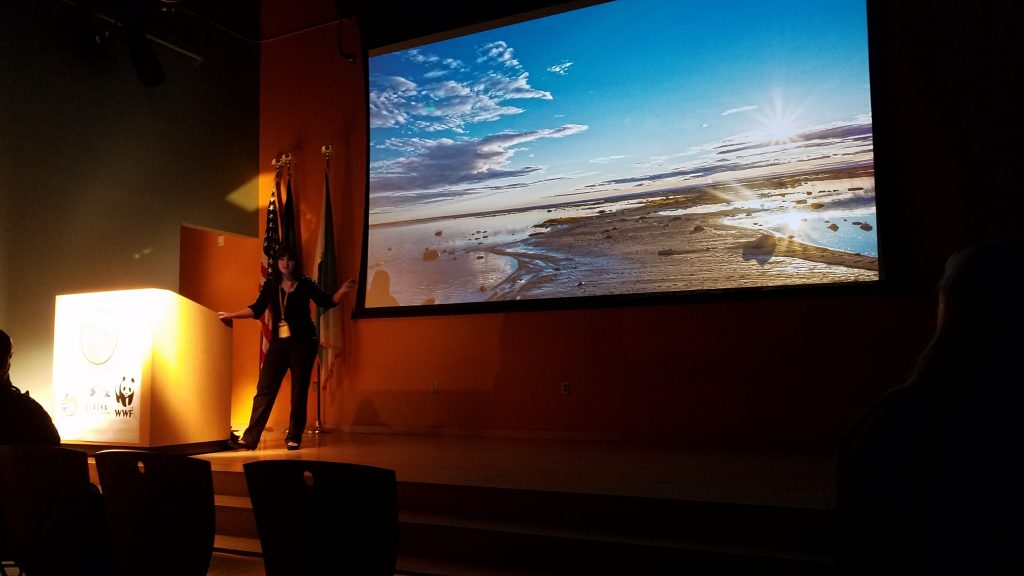
2018 Tetlin NWR – Refuge Discovery Trip Report
Over a long Memorial Day Weekend, a 12 member cadre of refuge friends from around Alaska embarked on an exploration of Tetlin National Wildlife Refuge. The group included some new friends as well as “old timers.” The group met up at Refuge Headquarters in Tok. On Thursday afternoon, Mary Timm, the retired Tetlin Refuge Educator and her husband Hank, invited us to their home to visit and chat about “all things Tetlin.” Over pizza and salad, they shared their extensive knowledge about the wildlife refuge. Mary and Hank homesteaded in the area years ago, and were a great source of information about Desper Creek, our destination for our canoe trip. A fun evening was shared by all.
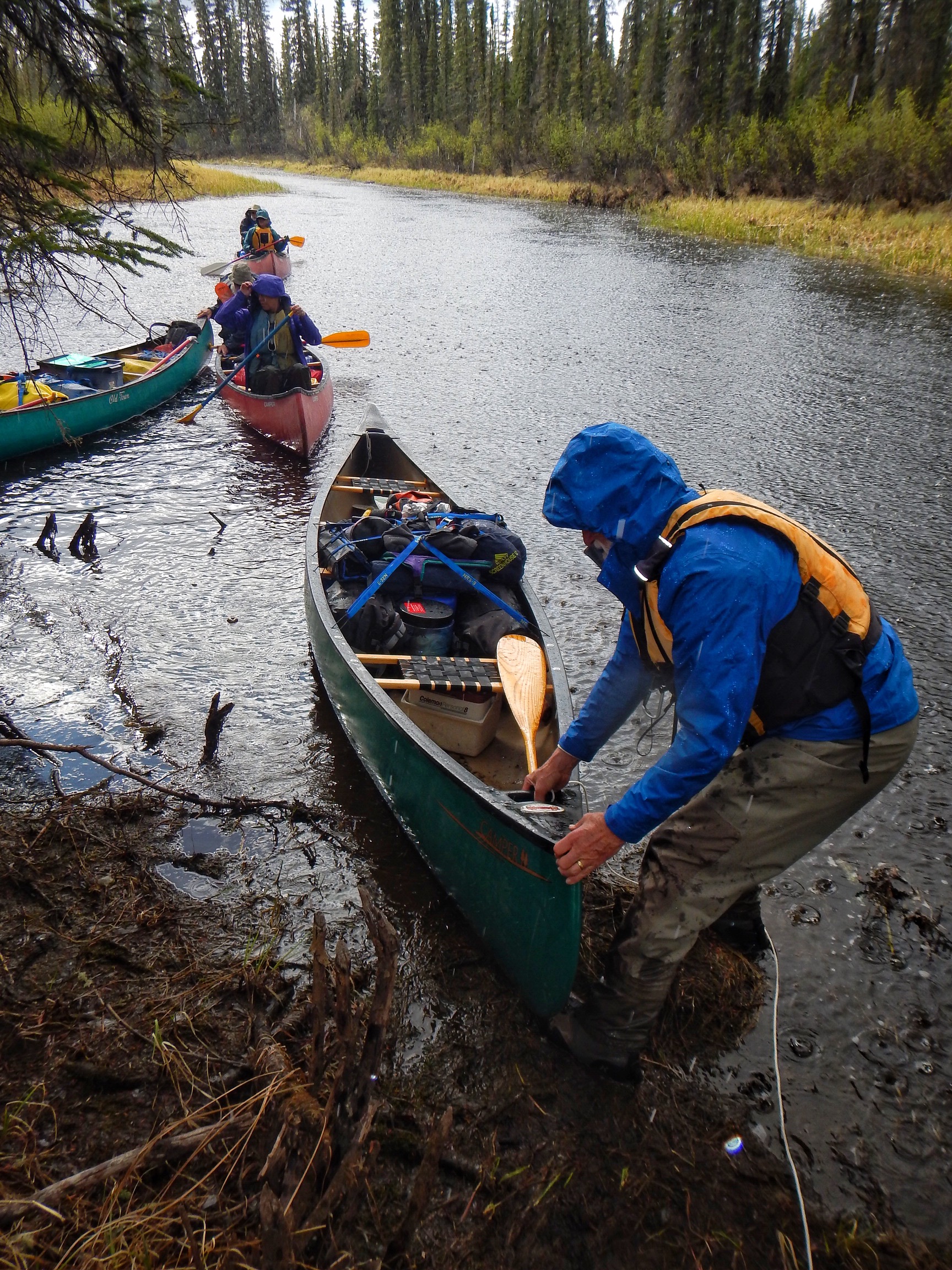 Friday morning the group met with Refuge Manager Shawn Bayless and his staff. Over a yummy breakfast, topics covered included: an overview of refuge programs and priorities, including the refuge’s boreal lynx project; priorities and staffing challenges in a declining budget environment; potential opportunities for Friends of Alaska Wildlife Refuges to help the refuge; and the Friends upcoming weekend canoe trip on Desper Creek. A number of ideas were generated for assistance friends could provide, including help with bird banding and river patrols, as well as assistance putting on the May migratory bird festival. A friends refuge visit includes a volunteer project – so after our breakfast get together we helped refuge staff pick up litter on its “Adopt a Mile” mile along the Alaska highway.
Friday morning the group met with Refuge Manager Shawn Bayless and his staff. Over a yummy breakfast, topics covered included: an overview of refuge programs and priorities, including the refuge’s boreal lynx project; priorities and staffing challenges in a declining budget environment; potential opportunities for Friends of Alaska Wildlife Refuges to help the refuge; and the Friends upcoming weekend canoe trip on Desper Creek. A number of ideas were generated for assistance friends could provide, including help with bird banding and river patrols, as well as assistance putting on the May migratory bird festival. A friends refuge visit includes a volunteer project – so after our breakfast get together we helped refuge staff pick up litter on its “Adopt a Mile” mile along the Alaska highway. After lunch, the group headed out to the Refuge Visitor Center, located on the Alaska highway a few miles from the Canadian border. Cora and Sylvia, two long-time refuge employees who grew up in nearby Northway, shared their extensive knowledge of the refuge and its resources with us. What a wonderful visit we had with these two ladies!
Our home for the night was Deadman Campground, in Tetlin where we spent the evening bird watching and socializing.
Saturday, Sunday and Monday we explored Desper Creek by canoe. This was a great way to immerse ourselves in Tetlin NWR. Our home for two nights was a beautiful camping spot 3 miles in, on a narrow peninsula surrounded by Desper Creek. We set up camp under a raven’s nest, filled with four young birds who looked like the were ready to fledge. What a noisy group they were, especially when Mom or Dad brought them food(which happened all hours of the day and night)! The layover day gave us time to explore on foot and by canoe the nearby refuge areas.
After a great weekend (including delicious Dutch oven cooking by friends member Dave), we all set off for home. What a wonderful time learning how we may be of assistance to Tetlin NWR, exploring the outdoors in Alaska, and making new friends. I am already looking forward to the next Refuge Discovery Trip, organized by our fun & fearless leader Poppy Benson.
Contact Poppy with your ideas for future trips at poppy.b.ak@
Stop Arctic Refuge Drilling
The Trump administration has launched the process to lease the coastal plain of the Arctic National Wildlife Refuge for oil drilling. In April, the Department of Interior’s Bureau of Land Management (BLM) initiated the first step in that process with an environmental review which is preceded by a public comment period which is open until June 19th.
Click here to sign on to our petition demanding the suspension of this ill-conceived scheme or submit your individual comments regarding drilling in the Arctic Refuge to the BLM by clicking here. (the comment link is on the right hand side of the page under “Submit Scoping Comments” please submit comments on the Notice of Intent)
Read the Notice of Intent here.
Suggested Arctic National Wildlife Refuge Talking/Commenting Points from the Wilderness Society
- The Arctic Refuge is an amazing wilderness area that provides essential resources for the Gwichi’in and other Alaska Natives, and recreation opportunities for the general public.
- The Arctic Refuge is one of the country’s most treasured and beautiful landscapes which should not be destroyed by oil and gas development.
- The coastal plain is extremely important and globally significant habitat for caribou, migratory bird breeding, wolves, and denning polar bears, as well as other Arctic and Alaskan species.
- Oil and gas drilling would have devastating impacts on this fragile coastal ecosystem due to the massive and polluting infrastructure needed to explore, produce and transport the oil. This includes sprawling roads, pipelines, drill pads, worker facilities and other infrastructure.
- Oil drilling infrastructure likely will sprawl over vast stretches of the narrow coastal plain, adversely impacting wildlife and subsistence. Caribou females with calves often avoid infrastructure, and the narrow coastal plain of the Arctic Refuge may limit their ability to shift away from infrastructure like they can do in wider areas near Prudhoe Bay.
- Oil production will produce greenhouse gases and black carbon which will further harm the Arctic, an area currently warming at twice the rate of most other parts of the planet.
- The new oil and gas development purpose of the Arctic Refuge conflicts with the other purposes of the refuge. Oil and gas development will degrade subsistence resources and access to those resources including wildlife, plants, water, and air quality, among others.
- The Fish and Wildlife Service in 2015, after an extensive analysis, recommended wilderness protection for the coastal plain to Congress.
- The U.S. and Canada have a 1987 treaty to protect the Porcupine Caribou Herd and that treaty’s obligations must be honored. The BLM needs to coordinate with the Canadian government and indigenous nations on this treaty’s requirements.
- The Environmental Impact Statement must not be rushed. Procedural and scientific integrity, not political expediency, should drive the timeline. The EIS must utilize best available scientific information and traditional and local knowledge, and obtain data to fill baseline data gaps.
- Given the major impacts a lease sale(s) will have on wildlife, the Gwich’in people, and others with connections to the Arctic Refuge – in combination with the lack of public debate on the tax law – we request a 60 day extension to the comment period.
